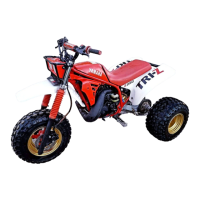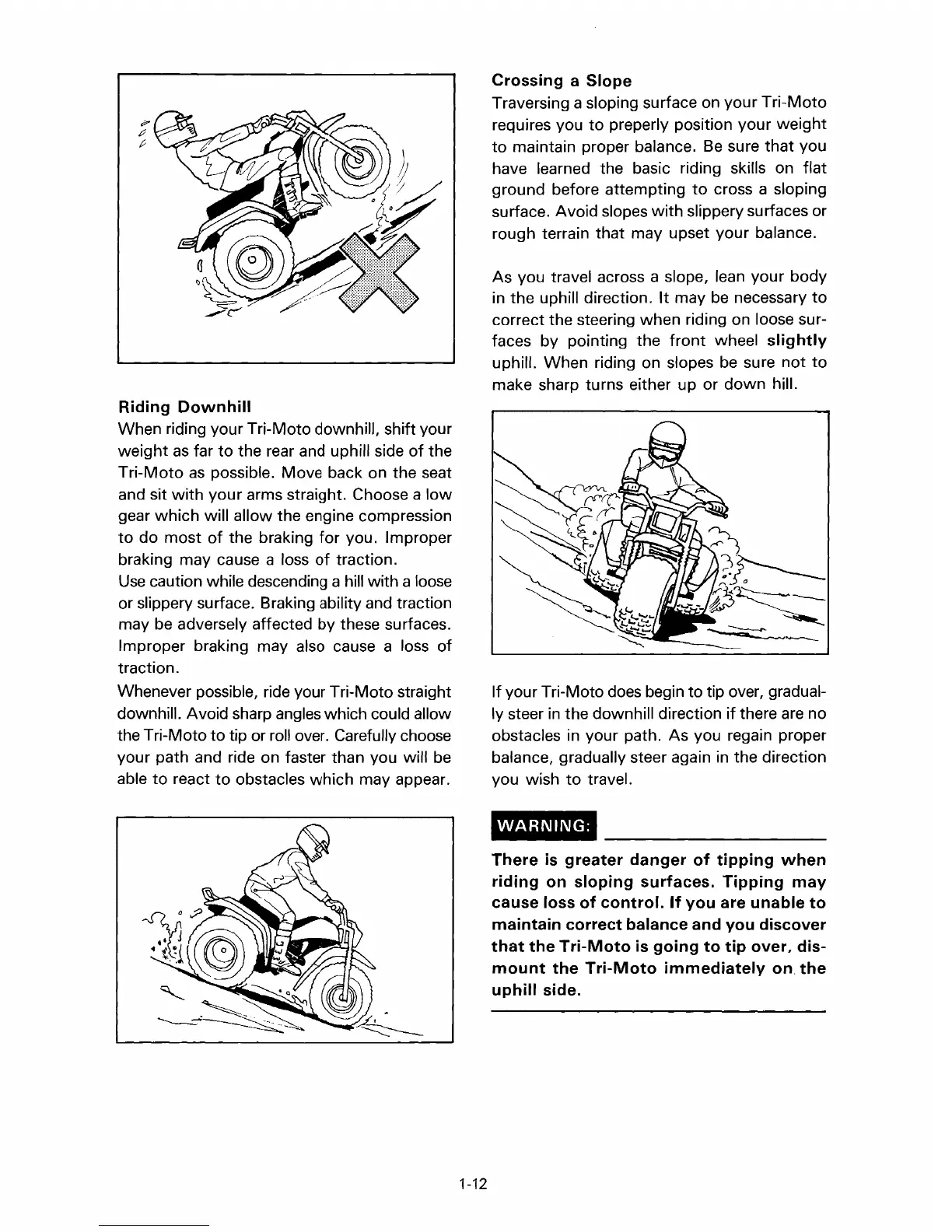Riding
Downhill
When riding your Tri-Moto downhill, shift your
weight
as
far
to
the rear and uphill side
of
the
Tri-Moto
as
possible. Move back on the seat
and sit
with
your arms straight. Choose a
low
gear which will allow the engine compression
to
do most
of
the braking
for
you. Improper
braking may cause a loss
of
traction.
Use
caution while descending a hill with a loose
or slippery surface. Braking ability and traction
may
be
adversely affected by these surfaces.
Improper braking may also cause a loss
of
traction.
Whenever possible, ride your Tri-
Moto
straight
downhi
ll.
Avoid sharp angles
wh
i
ch
could allow
the Tri-Moto to tip or roll over. Carefully choose
your path and ride on faster than you will
be
able
to
react
to
obstacles which may appear.
1-12
Crossing
a
Slope
Traversing a sloping surface on your Tri-Moto
requires you
to
preperly position your weight
to
maintain proper balance.
Be
sure that you
have learned the basic riding skills on flat
ground before attempting
to
cross a sloping
surface. Avoid slopes with slippery surfaces or
rough terrain that may upset your balance.
As you travel across a slope, lean your body
in
the uphill direction.
It
may
be
necessary
to
correct the steering when riding on loose sur-
faces by pointing the
front
wheel
slightly
uphill. When riding on slopes
be
sure not
to
make sharp turns either up or
down
hill.
If your Tri-Moto does begin to tip over, gradual-
ly steer
in
the downhill direction
if
there
are
no
obstacles in your path. As you regain proper
balance, gradually steer again in the direction
you wish
to
travel.
WARNING:
There
is
greater
danger
of
tipping
when
riding
on
sloping
surfaces.
Tipping
may
cause
loss
of
control.
If
you
are
unable
to
maintain
correct
balance
and
you
discover
that
the
Tri-Moto
is
going
to
tip
over,
dis-
mount
the
Tri-Moto
immediately
on
the
uphill
side.

